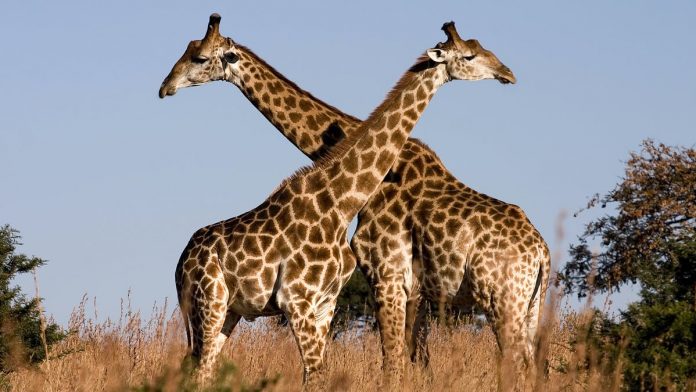Although Giraffes (Giraffa Camelopardalis) are seldom seen outside protected wildlife areas, these mammals are prolific inside many Southern Africa wildlife reserves like the Kruger National Park, Pilanesberg Nature Reserve and even the Kgalagadi Transfrontier Park.
How Tall is a Giraffe?
According to Robin Frandsen in Southern African Mammals, A Field Guide, Honeyguide Publications, 1998, Giraffes are on average 5 meters (16 feet) tall, but a specimen of nearly 6 meters (19 feet) was recorded in Kenia.
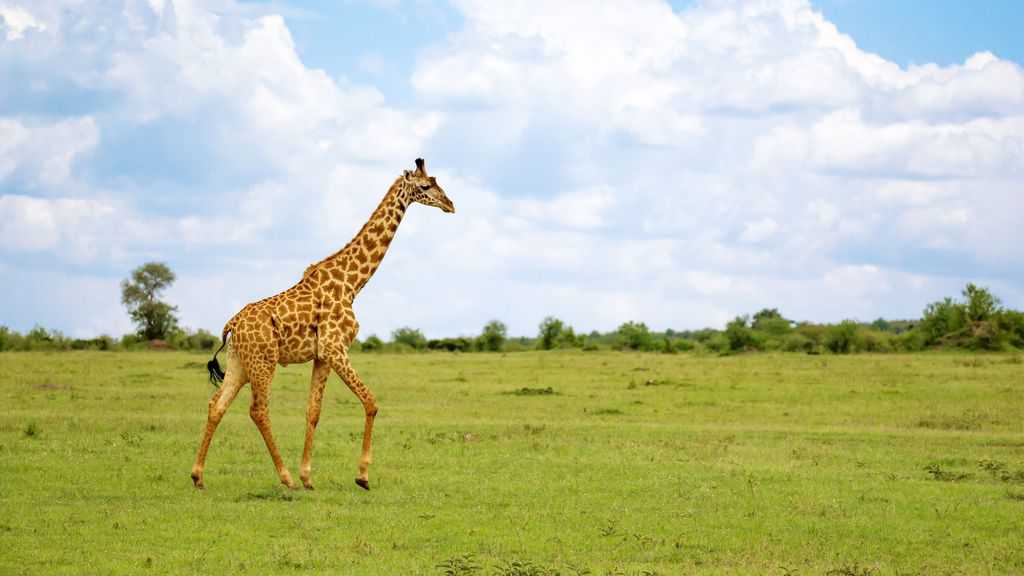
The weight of adult giraffes fluctuates between 700 kilograms (1543 Pounds) and 1395 kilograms (3075 Pounds) with the average weight of adult male giraffes being 1200 kilograms and adult females 850 kilograms.
Although the Giraffe has a long neck, its legs are equally impressive.

Standing 3.3 meter (male) and 2.8 meter (female) at shoulder height, the giraffe’s neck is between 1.7 and 2.2 meter long. Despite this long neck, Giraffes have only seven vertebrae in the neck – the same amount as a human. Special valves in the main artery of the neck and throat regulate the blood flow to the brain to prevent too much blood from flowing to or out of the head when the Giraffe lowers and raises its head.
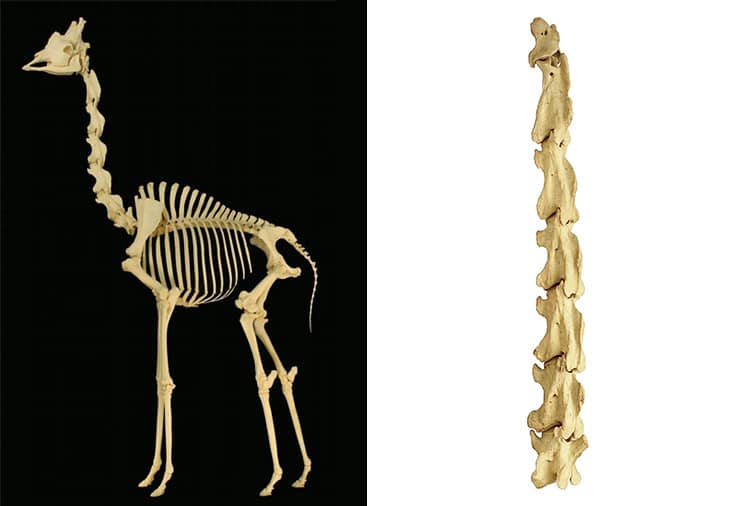
On the top of the head, black hair covers the edges of the two bony protrusions and resemble horns. Sometimes a smaller third ‘horn’ appears between the two protrusions. The 53-centimeter (21 inch) tongue of the Giraffe adds to its height and helps it reach the succulent top leaves of the trees.
What Do the Giraffe Eat?
Giraffes prefer bushy or open savanna overgrown with shrubs and require different types of Acacia Trees to feed. They do not often venture to open grasslands and they drink water when it is available.
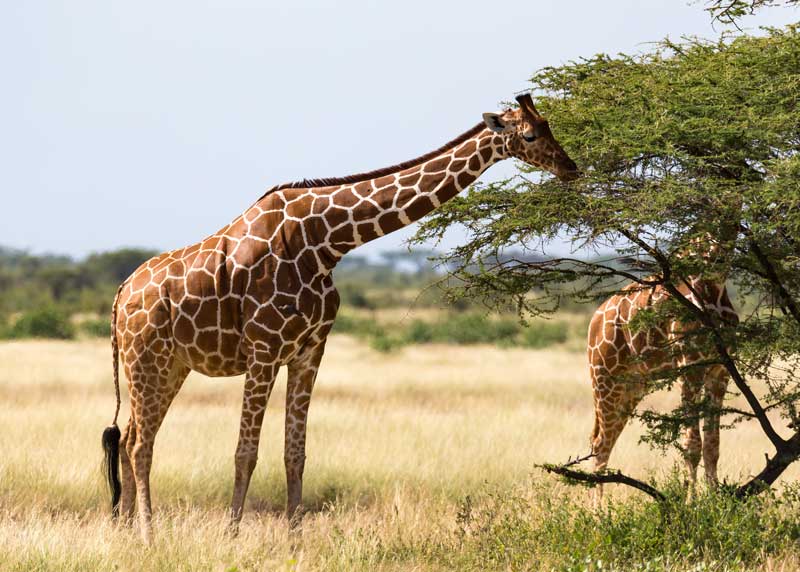
Robin Frandsen suggests that Giraffes could survive on the minimum of water as they acquire their moisture from the leaves they eat.
Being herbivores, Giraffes are mostly browsers and eat a variety of leaves and branches of Acacia Trees, which have a high protein content. They will also eat newly sprouted grass and even mineral rich gravel and bones according to Robin Frandsen.
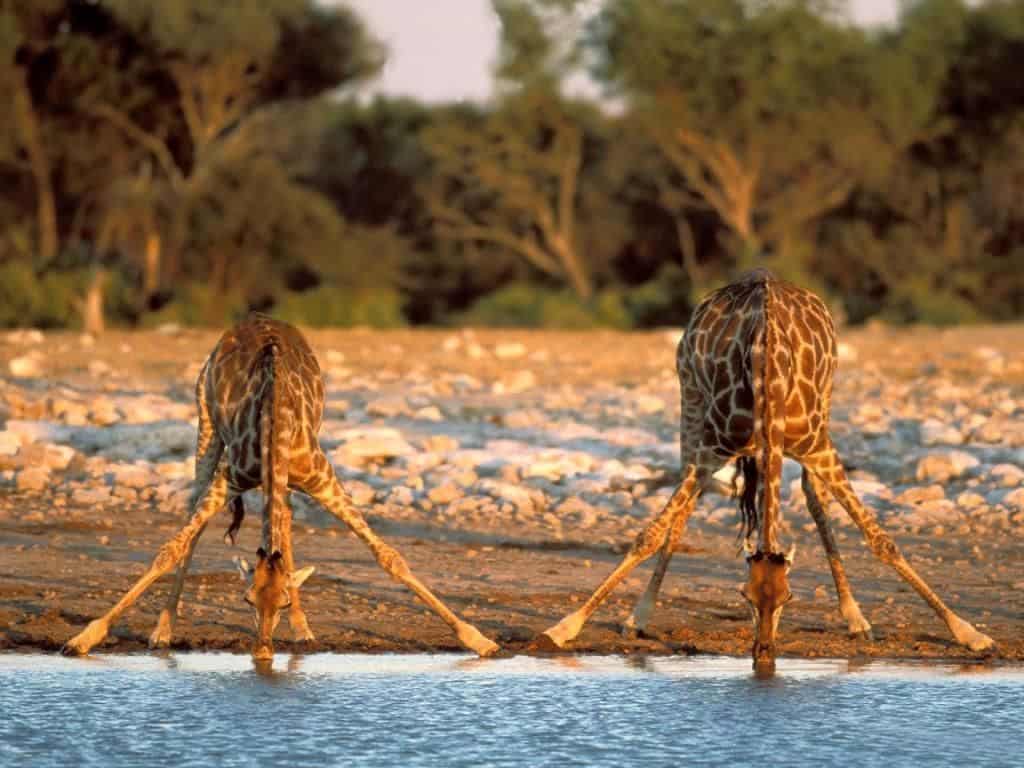
Giraffes are diurnal and will rest during the hottest part of the day – sometimes with their heads resting against a branch. Occasionally these mammals will feed during the night as well. It appears that there is no strict leadership in the herd and individuals freely roam between different groups.
- What Is Aromatherapy Vs. What Are Essential Oils?
- What is La Tomatina in Bunol, Spain Like? What to Expect at the Famous Tomato Throwing Festival
How Do Giraffes Protect Baby Giraffes?
Baby Giraffes are born after a gestation period of approximately 15 months.
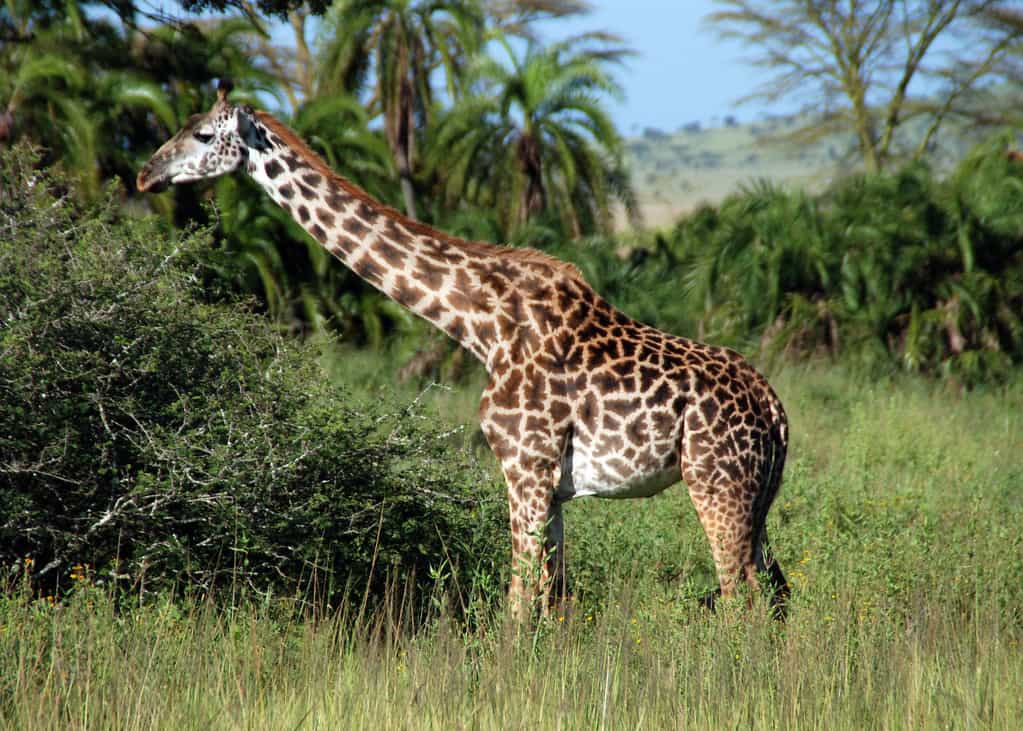
One calf is born at a time, but twins have been known to occur – although seldom. Mothers give birth while standing up and after dropping about 1.5 meters when being born, the newborn giraffe is an easy target for predators like Lion, Spotted Hyena, Leopard and Cheetah. Nature compensates for this by equipping the little Giraffe to stand within half an hour of birth and is able to run with its mother after only ten hours.
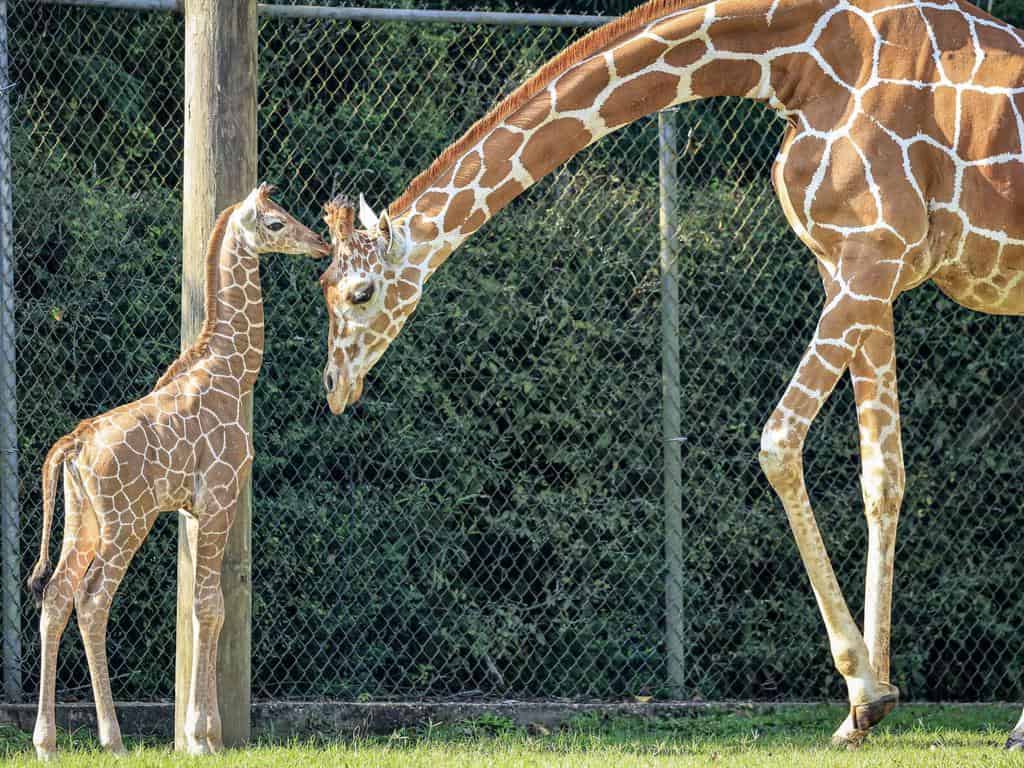
Mother Giraffes protect their calves by kicking the attacker and chopping at the predator with their front legs. It is told that a Giraffe protected herself and her calf against the attack of a Lion and even killed the Lion.
Male Giraffes sometimes fight each other by hitting with the neck and head, but these fights are seldom fatal. Giraffes are truly the gentle giants of the African plains.


